Gladiolus Muriel: description, planting and care
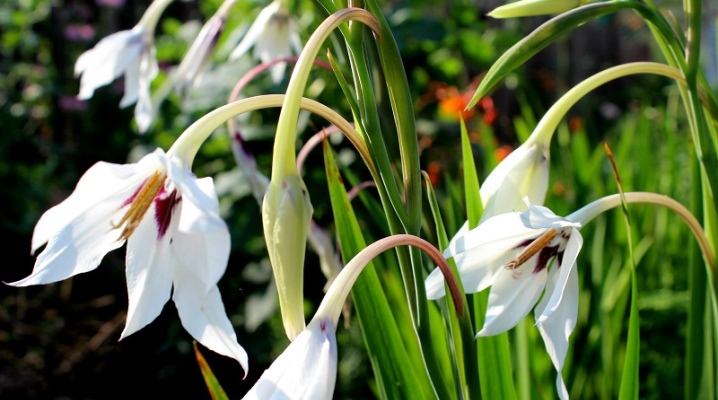
Gladiolus Muriel is a prime example of an attractive ornamental plant. This culture is relatively rare in domestic gardening. However, it has every chance of success, you just need to familiarize yourself with the nuances of its cultivation.
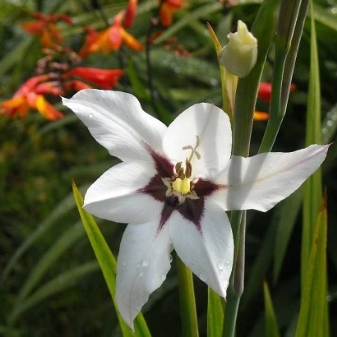
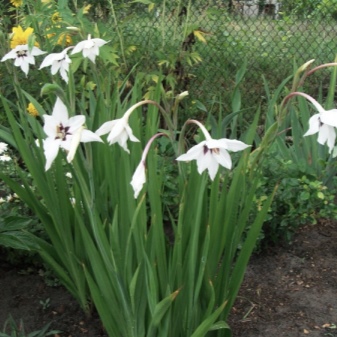
Description
Biologists ranked Acidantera bicolor in the category of monocotyledonous asparagus plants of the Iris family. They are considered part of the skewer genus. The name Muriel gladiolus was given in honor of the discoverer of the species. In some Russian-language sources, a different transcription of the name may also be used (Muriel, Muriel, Muriel).
Professional biologists have stopped identifying the genus acidanter for a long time. But horticultural literature sometimes also mentions its existence. In some cases, the name Acidantera Muriel is also found. Natural area of settlement - Africa. Most commonly, bicolor outdoor herbaceous plants are found in:
- Tanzania;
- Mozambique;
- Burundi;
- Malawi;
- Ethiopia.
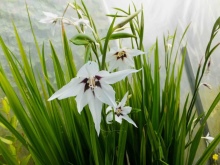

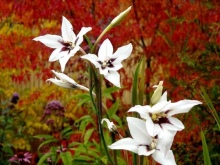
Gladioli Muriel are corms up to 1 m tall, sometimes slightly higher. Each specimen has a pair of elongated xiphoid leaves. The length of each of them is approximately 0.6 m. The diameter of the flowers ranges from 0.05 to 0.08 m. It is common for a bicolor to form 8-10 flowers per bush. Each bud contains 6 petals in the form of a triangle with a sharp top. At the base, the petals have a rich crimson, almost black or dark purple colors. Their outer side is snow-white.
The bloom of Muriel gladiolus falls on the last days of summer and at the beginning of calendar autumn. An attractive sweet aroma is characteristic. It is not very strong, but it still attracts quite a few insects. The plant enjoys well-deserved popularity abroad.
The frost resistance of the culture is low, therefore, it is necessary to tear off the corms in the fall and keep them in dry places before the onset of heat.
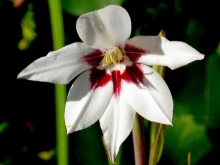
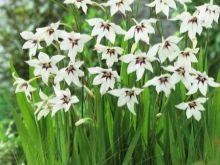
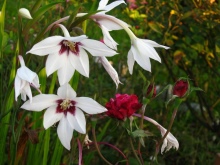
Planting and leaving
It is possible to grow a two-color acidander only on thoroughly drained soil. If this condition is met, there are no special requirements for its composition. Experts recommend placing such plants on the sunny side. Otherwise, there is a great risk that the plant will not bloom. This is especially true if the area is characterized by a cold climate. Then it is advisable to plant corms in the spring. Waiting for the ground to warm up (usually in March, under unfavorable conditions or in the north - in April). In the southern regions of our country, planting of Muriel gladiolus is possible in the fall. And the second option is preferable there, especially to the south of Volgodonsk. Seeds are planted at a depth of 0.1 m; there should be about 0.2 m between the seedlings.
Storage of bulbs before planting is possible only after careful sorting and rejection of bad specimens. The selected planting material is disinfected with fungicides. Otherwise, after some time, the planted plant will be affected by root rot. Keep the bulbs at 22 degrees for at least 14 days. Before the planting itself, the planting material is treated with a growth accelerator for 2-4 hours, choosing the drug at its discretion.



For fragrant gladiolus, the quality of drainage is critical. It is very useful to choose a light fertile soil with a neutral or slightly acidic reaction. Under different conditions, the plant will also develop, but it will be more difficult to grow it, and the result will be worse. Cultivation of gladiolus in partial shade is allowed.The depth of planting the bulb into the ground is 0.1 cm; it is recommended to put a small amount of river sand in the holes.
Freshly planted gladioli will have to be thoroughly watered. Sometimes the bulbs are germinated before planting. Thanks to this technique:
- culture becomes stronger and more enduring;
- earlier flowering is provided;
- the total duration of flowering increases;
- it will be possible to initially sort the copies by characteristics.

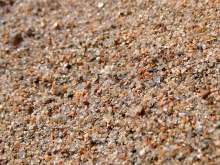
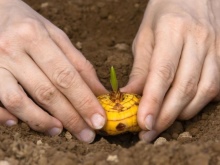
They usually try to germinate planting material in early March. To do this, use peat cups with a width of 0.15 m. The depth of the bookmark is 0.03-0.04 m. Most often, 1 onion is used for 1 tablet. But if the diameter is 0.15 m, you can put 3-5 bulbs at once. The tablets are placed in a warm, well-lit area. In the middle lane, additional lighting is highly recommended. It is necessary to grow and care for the seedlings of Muriel gladioli in the same way as for seedlings of other crops. Young seedlings are watered with a systematic drip method.
Fresh air is definitely needed, but there should be no drafts. The plant must be adapted to outdoor conditions in the last month before planting. As soon as stable heat comes, you can transplant gladioli directly into the ground. This should be done without affecting the root system. Even if it is not the most gentle, the risk of disrupting development is still great. Acidantera needs abundant, but not too powerful watering. Simply put, it needs a lot of moisture. But at the same time, excessive moisture is extremely dangerous.
The state of the earth should become the leading reference point. It is advisable to take into account the current weather.
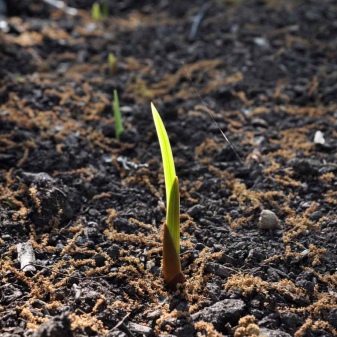
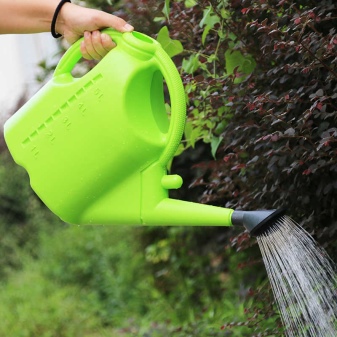
During dry periods, sometimes you will have to water the gladiolus daily. Drying out of the trunk circle provokes rapid drying of the bulbs. Soon the plant will become weaker. Irrigation is reduced during flowering. This technique allows you to achieve greater brightness and contrast of flowers. Weed control should be as regular as possible. Because of them, many pests can spread. The land will have to be loosened without fail, otherwise even optimal watering will not prevent the soil from drying out. Mulching is justified. Thanks to it, weeds are eliminated and moisture in the soil is preserved, as well as an attractive design effect is achieved.
As mulch, you can use:
- rotted or crushed pine cones;
- tree bark;
- peat;
- medium-sized crushed stone;
- granite chips.
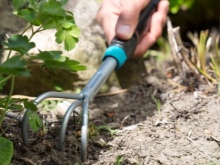
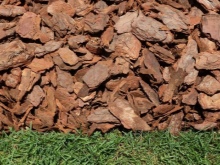
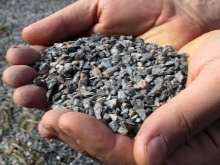
The exactingness of the gladiolus Muriel to feeding is not too great. When planting in fresh vegetable or garden soil with good nutritional properties, there is no need to add anything else. But if the soil is frankly poor, you will have to use fertilizers. The determination of the time between dressings is made at your own discretion. On relatively fertile land, the procedure is carried out monthly, and on scanty stony land, this is done once a decade.
The optimal dosage is indicated on the fertilizer packaging. Overfeeding leads to increased development of the green part of plants to the detriment of flowers. Cutting out empty inflorescences will help extend the flowering period. If early and damp autumn comes, gladioli should be dug up earlier than usual. You can refuse to dig up only in relatively warm regions.

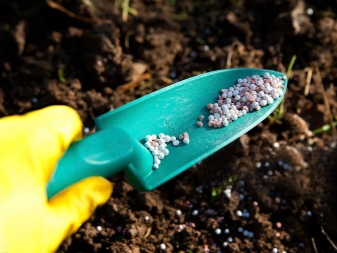
Reproduction
Vegetative, bulbous and seed methods are suitable for this procedure. Children are separated during the autumn months. They must be planted with the onset of spring, using simultaneously with adult specimens. They must be sealed to a depth equal to the height of the bulbs. The distance between plantings should match the diameter of the bulbs.
It is impossible to count on the appearance of flowers in the first few years. Flowering will begin in seasons 3 or 4. It is recommended to remove prematurely appearing single flowers. Then the plant will accumulate more strength and develop more successfully.
The seed method is laborious, but it allows you to achieve the best qualities in such specimens.
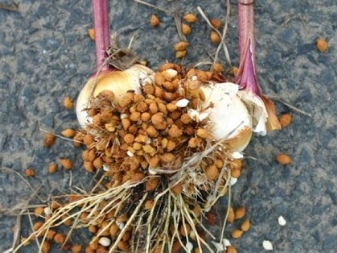

Diseases and pests
Dangerous for the gladiolus Muriel bulb mite, aphid, thrips, slugs... Of diseases - rust, powdery mildew and root rot... Plants affected by unfavorable factors are more often sick. The key control method is the use of agricultural technology. It is undesirable to plant flowers near crops affected by common pests and gladioli infections.
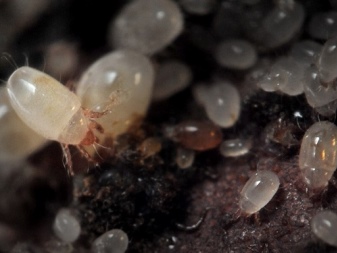
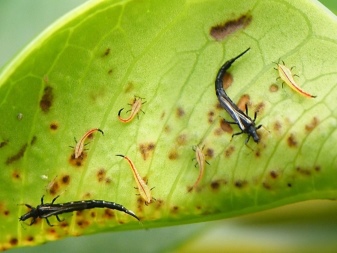
In the next video, you will find more information about the gladiolus Muriel.







































































































The comment was sent successfully.